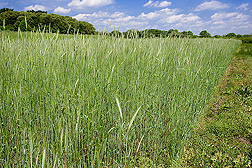Read the magazine story to find out more.
|
|
Growers Use Chart to Help Choose Cover Crops
By Sandra Avant
June 5, 2015
U.S. Department of Agriculture (USDA) scientists have developed a “Cover Crop Chart” that helps growers choose the best cover crop to meet their management and production needs.
Soil scientist Mark Liebig and his colleagues with the Agricultural Research Service’s (ARS) Northern Great Plains Research Laboratory (NGPRL) in Mandan, North Dakota, created the Cover Crop Chart, which can be downloaded for free at www.mandan.ars.usda.gov. ARS is USDA’s principal intramural scientific research agency, and this research supports the USDA priority of promoting international food security.
Cover crops—typically grown in the offseason—are becoming more popular to help reduce soil erosion, increase organic matter, improve early weed control and provide forage for animals. By providing these services, cover crops can create more resilient and efficient production systems.
The interactive chart, which was recently updated from its first release in 2010, gives growers a broad spectrum of potential options that could benefit their operations. The chart includes information on crop species that may be planted individually or in mixtures and gives specifics on growth cycle, water use, plant architecture, forage quality, pollination and more. Crops are categorized by similar attributes—cool season or warm season, grasses or broadleaf and legumes or non-legumes.
The updated chart now includes 58 cover crop species, along with new sections addressing salt-tolerant grasses and placement of crops within a cash-crop rotation.
The chart has been used by many growers in the United States and abroad, and has served as an educational resource by conservationists to raise awareness about cover crops, according to Liebig.
Read more about this work in the June 2015 issue of AgResearch magazine.

